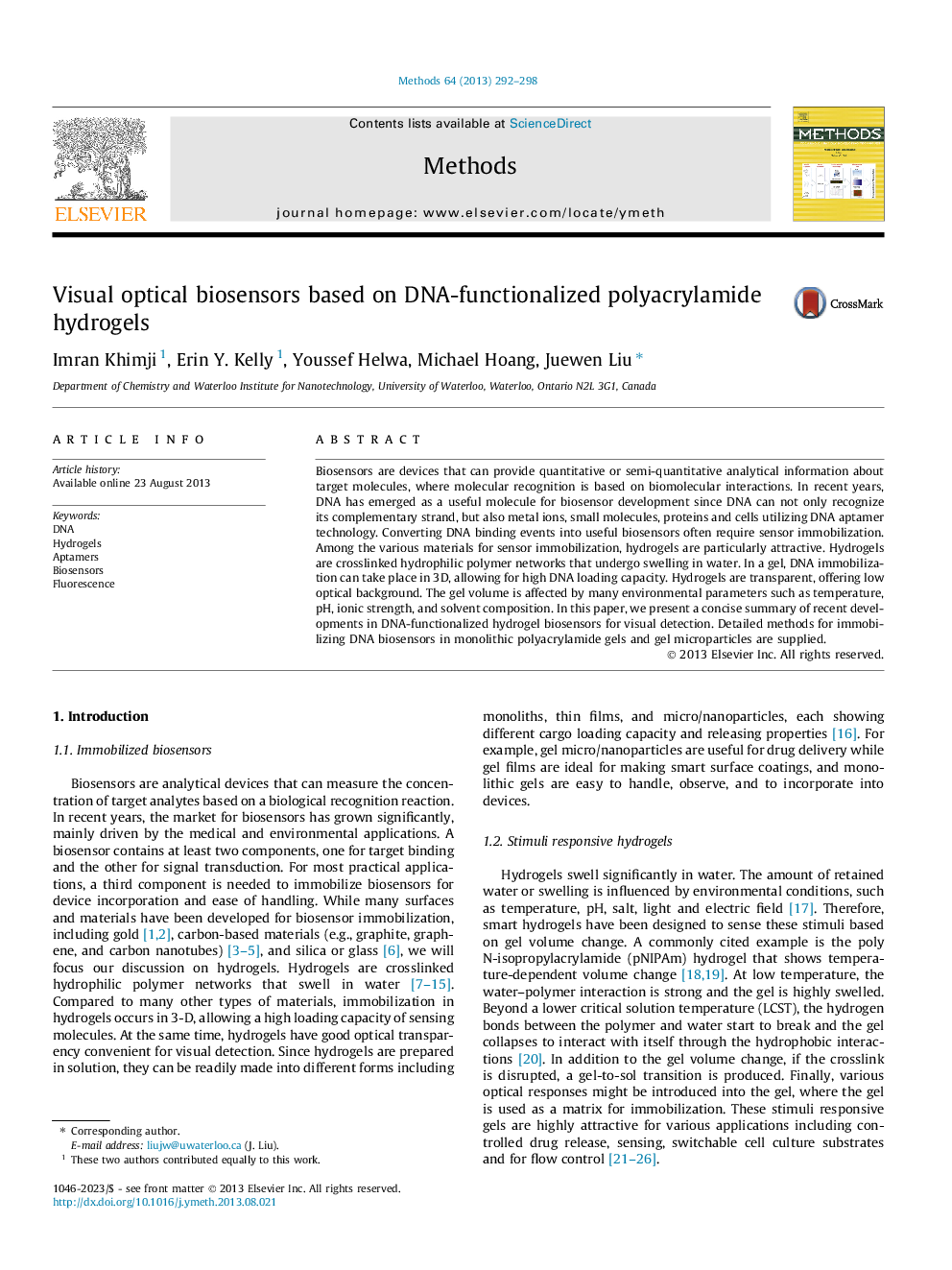| Article ID | Journal | Published Year | Pages | File Type |
|---|---|---|---|---|
| 10825856 | Methods | 2013 | 7 Pages |
Abstract
Biosensors are devices that can provide quantitative or semi-quantitative analytical information about target molecules, where molecular recognition is based on biomolecular interactions. In recent years, DNA has emerged as a useful molecule for biosensor development since DNA can not only recognize its complementary strand, but also metal ions, small molecules, proteins and cells utilizing DNA aptamer technology. Converting DNA binding events into useful biosensors often require sensor immobilization. Among the various materials for sensor immobilization, hydrogels are particularly attractive. Hydrogels are crosslinked hydrophilic polymer networks that undergo swelling in water. In a gel, DNA immobilization can take place in 3D, allowing for high DNA loading capacity. Hydrogels are transparent, offering low optical background. The gel volume is affected by many environmental parameters such as temperature, pH, ionic strength, and solvent composition. In this paper, we present a concise summary of recent developments in DNA-functionalized hydrogel biosensors for visual detection. Detailed methods for immobilizing DNA biosensors in monolithic polyacrylamide gels and gel microparticles are supplied.
Related Topics
Life Sciences
Biochemistry, Genetics and Molecular Biology
Biochemistry
Authors
Imran Khimji, Erin Y. Kelly, Youssef Helwa, Michael Hoang, Juewen Liu,
